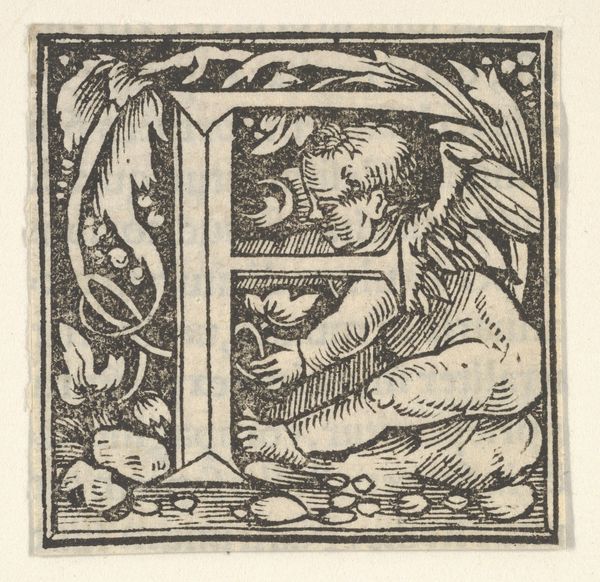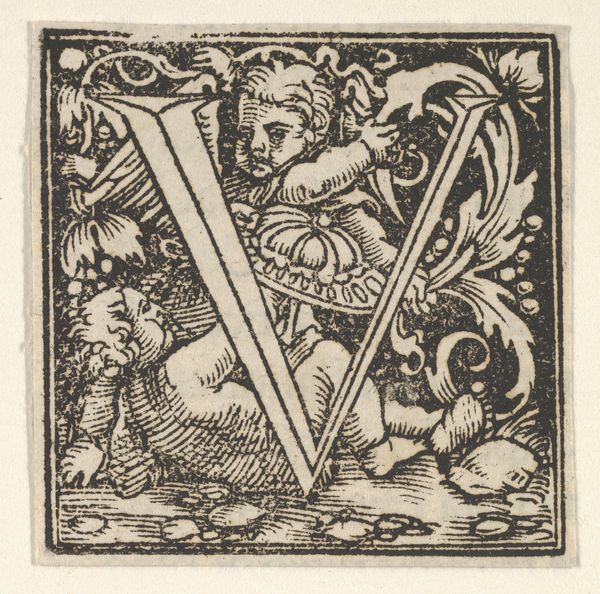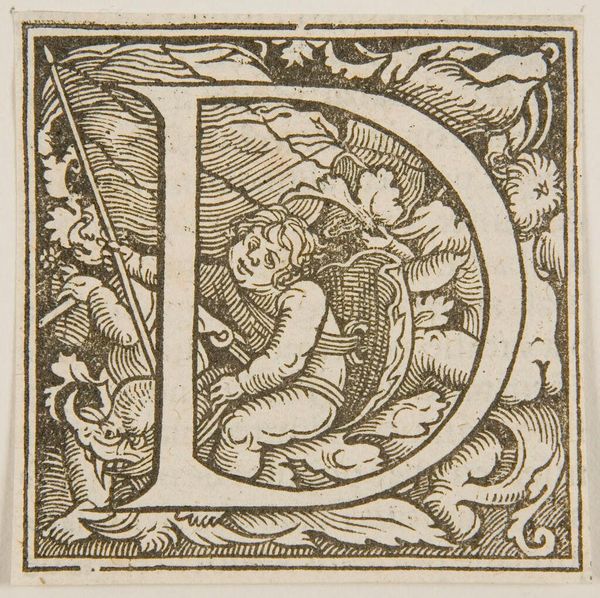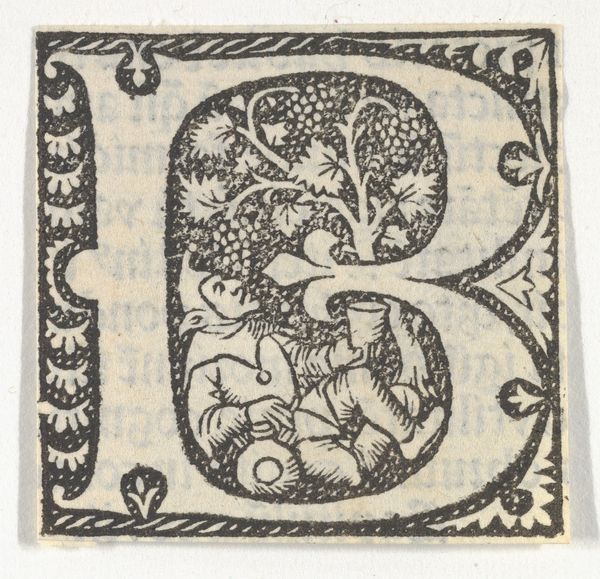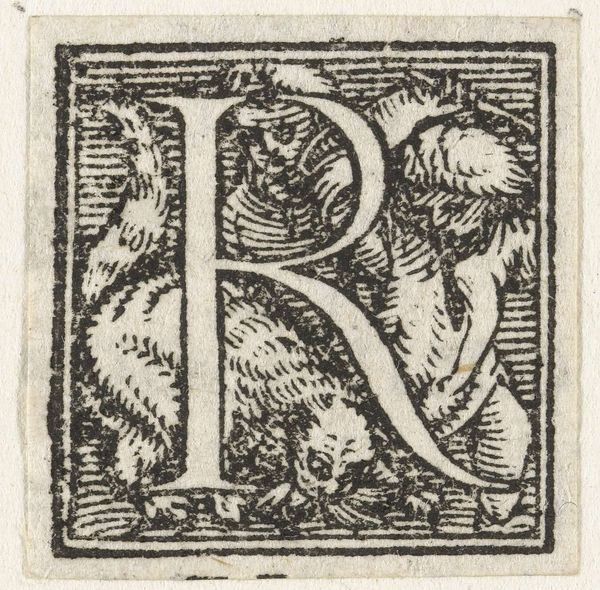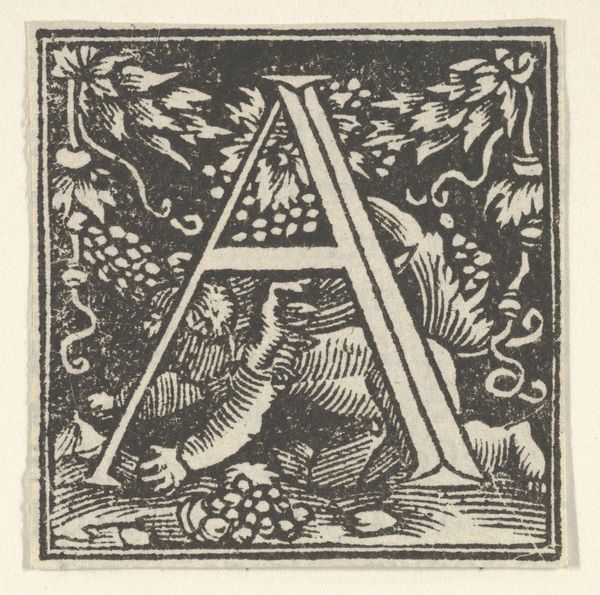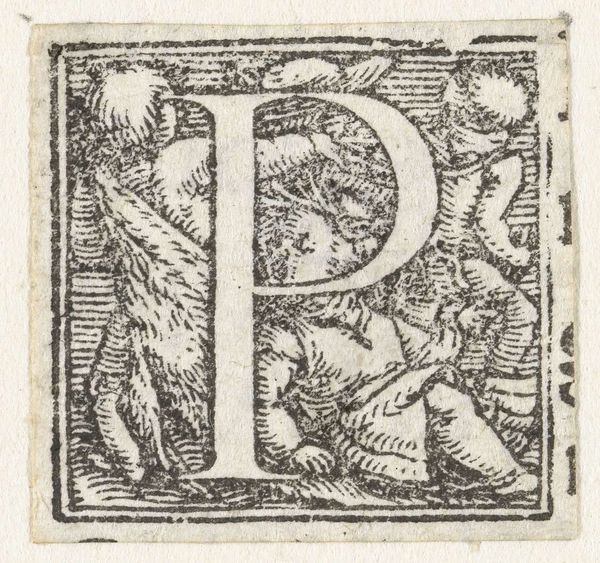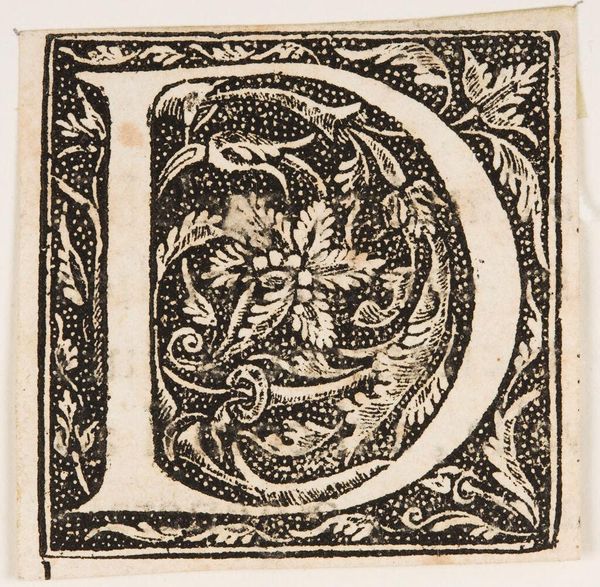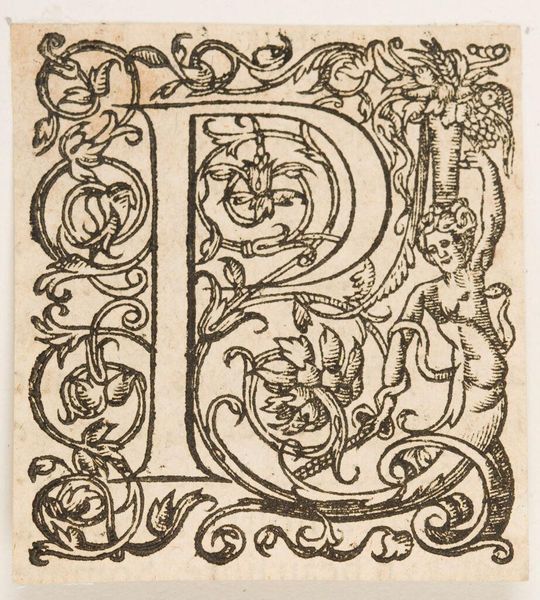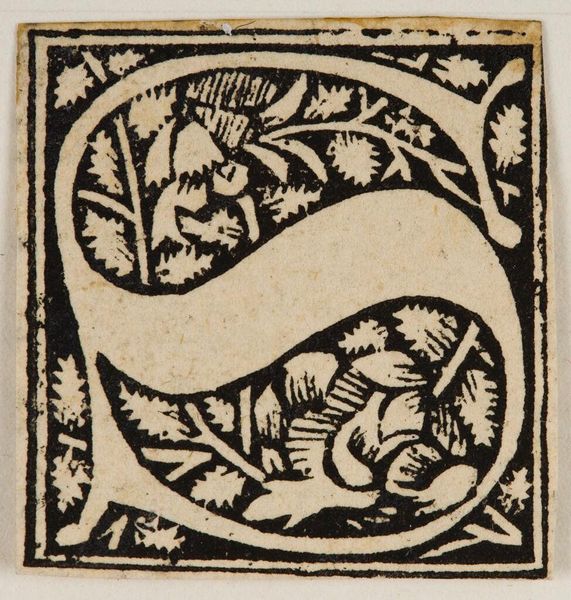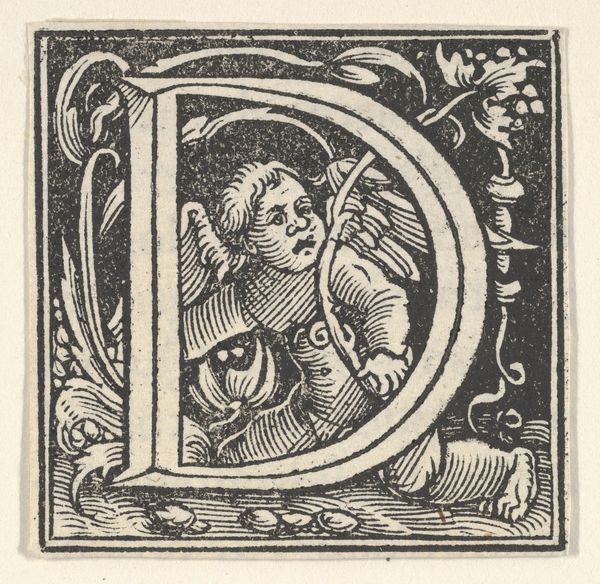
drawing, print, ink, woodcut, engraving
#
drawing
#
pen drawing
# print
#
pen illustration
#
figuration
#
11_renaissance
#
ink
#
woodcut
#
line
#
northern-renaissance
#
engraving
Dimensions: Sheet: 1 7/8 × 1 7/8 in. (4.8 × 4.8 cm)
Copyright: Public Domain
Editor: This is a woodcut initial, the letter "T," created sometime between 1533 and 1540 by Heinrich Vogtherr the Elder. It's currently at the Metropolitan Museum of Art. It's got this whimsical, almost gothic feel to it, but also...kind of playful? There’s a little putto in there. What do you make of it? Curator: Ah, yes! This tiny world teeming with detail. Vogtherr really crams the space! Imagine, this was likely part of a larger printed text. Think of how often people encountered art – not in a museum, but as part of daily life. What strikes me is the inherent tension: you have this traditional letterform, starkly black and white, juxtaposed with these fantastical, organic flourishes. It’s as if the letter is struggling to contain the riotous energy within. What do you think is the overall theme of the print? Editor: It seems to pit the rigid structure of the letter against, like you said, these bursts of nature and mythological creatures. Almost a struggle between order and chaos? Curator: Precisely! Consider the Renaissance fascination with classical learning, order, *and* a simultaneous embrace of the grotesque. Look at the dragon-like creature at the bottom! It reminds me of how the era grappled with defining humanity against the backdrop of the natural world, where monsters lurked beyond the edges of the map and of understanding. And look closely, there’s almost a dance-like quality with all of the swirling lines of the botanical details and the cross-hatching. It all culminates to this very intricate story! What a statement. Editor: That's a great point. It's not just decorative; it's a whole philosophy squished into this tiny little "T." I’ll never look at illuminated letters the same way! Curator: Indeed! These little gems hold so much more than initially meets the eye, right? It also makes one wonder if we ever know the artist's exact intent and interpretation. Regardless, art such as this is always food for thought.
Comments
No comments
Be the first to comment and join the conversation on the ultimate creative platform.
